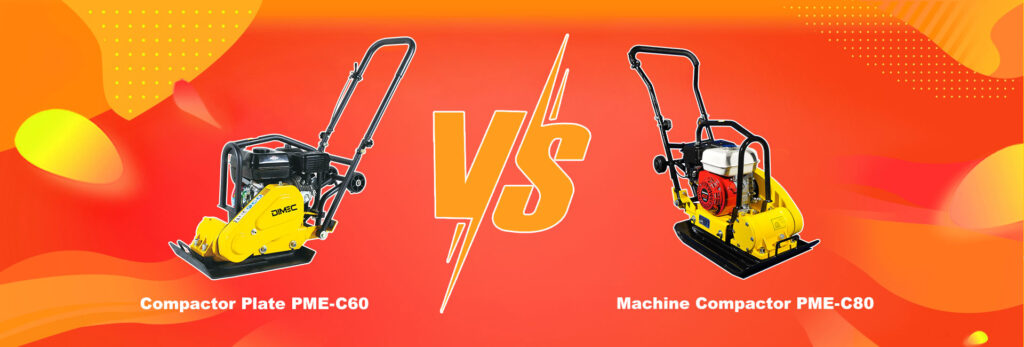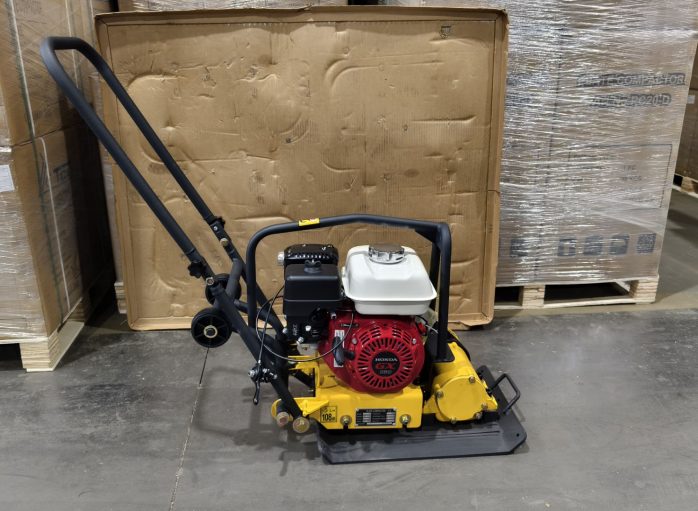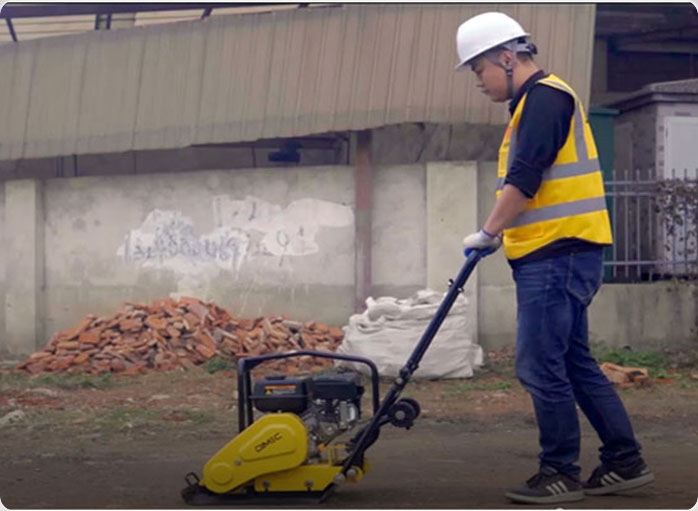Compactor Plate PME-C60 vs Machine Compactor PME-C80: Unraveling the Optimal Choice for Your Projects
- DIMEC
- Compactor Plate, Máquina compactadora
- 17/02/2025
Inicio " Compactor Plate PME-C60 vs Máquina compactadora PME-C80: Unraveling the Optimal Choice for Your Projects

Índice
1. Introducción
Especificaciones técnicas
| Modelo | Compactor Plate PME-C60 |
|---|---|
| Motor | Honda / Robin / Loncin / Motor diesel |
| Tipo de motor | Motor de gasolina / diesel de 4 tiempos, monocilíndrico, refrigerado por aire |
| Frecuencia [VPM] | 5600 |
| Fuerza centrífuga [KN] | 12 |
| Tamaño de la placa (LxA) [cm] | 50x36 |
| Profundidad máxima de compactación [cm] | 28 |
| Velocidad de desplazamiento [m/min] | 25 |
| Ángulo de inclinación máx. | 20° |
| N.W./G.W. [kg] | 65/70 |
| Paquete (LxAnxAl) [cm] | 75x38x56 |
| Modelo | Máquina compactadora PME-C80 |
|---|---|
| Motor | Honda / Robin / Loncin / Motor diesel |
| Tipo de motor | Motor de gasolina / diesel de 4 tiempos, monocilíndrico, refrigerado por aire |
| Frecuencia [VPM] | 4200 |
| Fuerza centrífuga [KN] | 15 |
| Tamaño de la placa (LxA) [cm] | 64x42 |
| Profundidad máxima de compactación [cm] | 35 |
| Velocidad de desplazamiento [m/min] | 25 |
| Ángulo de inclinación máx. | 20° |
| N.W./G.W. [kg] | 80/85 |
| Paquete (LxAnxAl) [cm] | 75x46x58 |
2. Product Profiles
2.1 Compactor Plate PME-C60
2.2 Machine Compactor PME-C80
3. Performance Showdown
3.1 Engine Power and Output
3.2 Plate Size and Compaction Force
3.3 Operational Speed and Productivity
4. Application-Specific Suitability
4.1 Ideal Projects for Compactor Plate PME-C60
- Residential Construction: The PME-C60 is perfect for tasks like building small driveways, patios, and backyard walkways. Its compact size allows it to work in tight spaces around homes without causing damage to surrounding structures.
- Small-Scale Commercial Projects: For small businesses looking to create or renovate outdoor areas, such as small parking lots or loading docks, the PME-C60 provides a cost-effective and efficient solution.
- Soil Types Requiring Gentle Compaction: In areas with soft or sandy soils that don’t need excessive force for compaction, the PME-C60 can achieve the necessary compaction levels while maintaining a high level of precision.
4.2 Ideal Projects for Machine Compactor PME-C80
- Large-Scale Infrastructure Projects: The PME-C80 is the go-to machine for highway construction, airport runway development, and large-scale commercial building projects. Its high-power engine, large plate size, and deep compaction capabilities ensure a stable and long-lasting foundation.
- Industrial Site Development: When creating large industrial sites, the PME-C80 can quickly and effectively compact the soil over large areas, reducing the overall project timeline.
- Hard and Compacted Soil Conditions: In areas with hard or compacted soils, the PME-C80’s superior power and compaction force can break through the tough soil layers and achieve the required compaction depth.
5. Operational Considerations
5.1 Ease of Use and Operator Comfort
5.2 Maintenance Requirements
5.3 Cost-Benefit Analysis
6. Conclusión
7. Frequently Asked Questions
FAQ 1: What is the most significant difference between the PME-C60 and the PME-C80?
FAQ 2: Can the PME-C60 be used for large-scale projects?
FAQ 3: How often should I perform maintenance on these machines?
FAQ 4: Which machine is more fuel-efficient?
FAQ 5: Are there any safety features on these machines?
Compactador de placas X Apisonadora X Apisonadora
También le puede gustar
What Are the Different Types of High Pressure Washers?
Jumping Jack Compactor: Ultimate Guide to Efficient Ground Compaction
Diesel Engine Maintain
How Does a Rammer Tool Compare to Other Compaction Equipment?
Top 5 Mobile Compactors for Industrial Use
Mini Concrete Mixer: The Ultimate Guide for Efficient Mixing and Construction
Marcas preferidas de equipos de compactación para ingeniería
Tres líneas de productos esenciales para una construcción eficiente

Plate Compactors (40KG - 750KG)
We offer a wide range of models from light to heavy - duty. Modular design fits multiple jobs like municipal work and asphalt repair.

Tamping Rammers (32KG - 90KG)
Nine models with Honda/Robin/Loncin power. Smart fuel control and ergonomic design. Ideal for trench and slope work.

Road Rollers (0.3T - 5.5T)
Multi - level amplitude for different materials, and real - time compaction monitoring. Serve all road - building stages.

